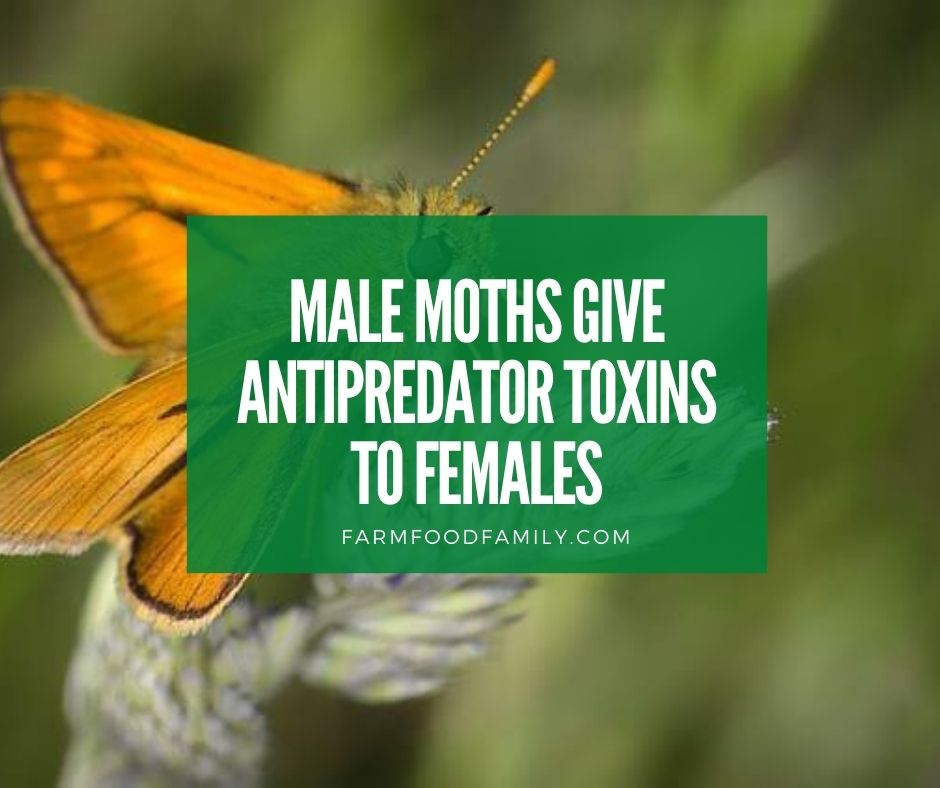Adult male tiger moths feed on toxic plants before mating and transfer the toxins to females while mating. The toxins protect the female and her eggs.
The caterpillars of many species of butterflies and moths feed on poisonous plants and store the plant toxins in their own tissues, When the caterpillars metamorphose to their adult forms, the stored plant toxins make the adults distasteful and poisonous to many predators and provide protection against predation. Many, but not all, tiger moths and the monarch butterfly use this mode of protection.
Eating poisonous foods for long periods of time poses some difficult problems. The caterpillar must have a way to keep the plant’s toxic chemicals from poisoning it. The most common method of doing this is to store the chemicals in the fatty tissues of the animal.
Even then, minute amounts of the toxins travel through in the body after feeding and the caterpillar must have enzymes that are unaffected by the toxins. Additionally, without enzymatic modification, these toxins may reduce the female’s ability to produce eggs, and toxins stored inside the eggs may inhibit development of the embryos.
Related: 7 Butterflies That Look Like Monarchs

Direct Toxin Transfer to Females
Caterpillars of the tiger moth called the scarlet bodied wasp moth, Cosmosoma myrodora, feed on non-toxic plants, but adult males obtain pyrrolizidine alkaloids when they drink liquids secreted on the surface of dogbane, Eupatorium capillofolium, leaves and stems.
Some of these alkaloids are stored in the male’s body fluids and protect the males from being eaten by the spider Nephila clavipes. But a large proportion of them are added to flocculant cottony filaments stored in sacs in the male’s abdomen.
During mating, the males extrude these filaments on top of the females while mating, providing the females protection from the Nephila spiders.

Indirect Toxin Transfer to Eggs
The male provides additional alkaloids to the female in his larger sperm packet (spermatophore). These toxins inserted into the female’s reproductive system circulate through the female’s body and add protection against spiders to the female.
In addition, these circulating toxins are applied to the surface and enter the eggs granting them protection from ants, ladybeetles and lacewings.
Alkaloids Affect Female’s Mate Selection
The females can detect the toxins in the filaments and males that did not feed on dogbane or that do not discharge their filaments during mating have a greatly reduced success in mating when males with alkaloids are present.
In addition to serving as a courtship enhancer, the filaments laying over the female may for some time inhibit other males from attempting to mate with a female – reducing competition between males.
Other Functions of Alkaloids in Filaments
Other tiger moths have been noted to eat alkaloids and some of these have abdominal pouches with flocculant filaments in them.
These moths have not been observed to discharge the filaments during mating, but do release them when they are probed or attacked by predators. It appears that the scarlet bodied wasp moth has altered the function of an anti-predator defense to serve in courtship.
Some moths only exhibit specific behaviors if they have fed on alkaloid containing plants as larvae. Others convert the alkaloids to sex-attracting pheromones. In addition to protecting insects from predation, alkaloids have been adapted for a wide variety of uses in insects – many related to reproductive behavior.

